1.
2.
3.
4.
ASIF JAHI DYNASTY (1724 - 1948)

The seven rulers of the Asif Jahi Dynasty
In 1724 Nizam-ul-Mulk Asif Jah I founded the Asif Jahi Dynasty and seven generations of the family ruled the Deccan for 224 years upto 1948. During this period several buildings of archaeological and public importance were built. Notable among them are: Purani Haveli, Chow Mahalla Palace, Osmania University, Jubilee Hall, Assembly Building, Asifia Library, Osmania Hospital, High Court, and all the buildings in the Public Garden.
Soon after India gained independence in 1947, all princely states were invited to join the Republic. Nizam VII was reluctant to do so; but in 1948, after the Police Action, Hyderabad state was merged into the Indian Union. Mir Osman Ali Khan, the last Nizam, died on Friday 24 February 1967. It was end of the princely era.
courtesy
http://mahabubnagar.tripod.com/Nizam_Dynasty.htm
Osman Ali Khan, Asaf Jah VII..
2.His Exalted Highness Prince Mukarram Jah Bahadur, 8th Nizam
of Hyderabad
Born 6 October 1933 in Nice, in France, Prince Mukarram Jah was the heir to possibly the world's biggest private fortune. The scion of two great dynasties, his maternal grandfather was the last Ottoman Caliph ('Abdu'l-Mijid II) and his paternal grandfather the 7th Nizam of Hyderabad (Osman Ali Khan), widely considered the richest man in the world during his lifetime, amassing a fortune worth a staggering US$210 billion in today's money (http://en.wikipedia.org/wiki/Wealthy_historical_figures_2008 ). For centuries, the Nizams of Hyderabad had ruled over an area the size of France in southern India, initially governing on behalf of the Mughal Empire but later becoming independent rulers. Eventually, they became closely allied to the British, and were accorded the status of premier princely state in all of India.
Nizam VIII after his lavish coronation at Chowmahalla Palace in Hyderabad in 1967 (above). Chowmahalla Palace today, after loving and faithful restorations (below).
After Indian Independence in 1947, the Nizam refused to join the Indian Union. But his forces were no match for the Indian Army which invaded Hyderabad state in 1948, forcibly annexing the territory in an operation dubbed "Operation Polo". The kingdom of the Nizams was no more, but the 7th Nizam was nevertheless allowed to keep most of his assets, including his palaces, servants, and private fortune.
Prince Mukarram Jah was crowned the 8th Nizam of Hyderabad in 1967 following the death of Osman Ali Khan. In the 1970's when the Indian Government abolished princely titles, privileges and privy purses, the 8th Nizam took the momentous decision to settle in Australia, to carve out the life of a "gentleman farmer".
The 8th Nizam of Hyderabad's love affair with Australia began in 1972 when he visited the city of Perth in Western Australia for the very first time, and was attracted by the peace and quiet, the people, and the open spaces. A short while later, he purchased a half-million-acre sheep farm near the town of Kalbarri known as Murchison House Station (600km north of Perth). He met and married an Australian woman (Helen Simmons), who bore him two sons. In 1978 he acquired a luxury mansion in West Perth (known as Havelock House). Helen Simmons sadly passed away in 1989. Later, his sheep farm and Havelock House were sold off. The 8th Nizam or "Prince Jah" now lives unpretentiously in Turkey, preferring the "simple life" of the common man. His periodic visits to Hyderabad are eagerly anticipated by his innumerable loyal subjects. He and his first wife Princess Esra are universally admired for spearheading the comprehensive and costly restorations to the historic palaces of Chowmahalla and Falaknuma, preserving for future generations these glorious heirlooms of the Nizams of Hyderabad. In recognition of these efforts,Chowmahalla Palace won the prestigious UNESCO Heritage Conservation Award in September 2010, edging out tough competition.



[ Nizam of Hyderabad's full title - Lieutenant-General His Exalted Highness Rustam-i-Dauran, Arustu-i-Zaman, Wal Mamaluk, Asaf Jah VIII, Muzaffar ul-Mamaluk, Nizam ul-Mulk, Nizam ud-Daula, Nawab Mir Barakat 'Ali Khan Bahadur, Sipah Salar, Fath Jang, Faithful Ally of the British Government, Nizam of Hyderabad and Berar ]
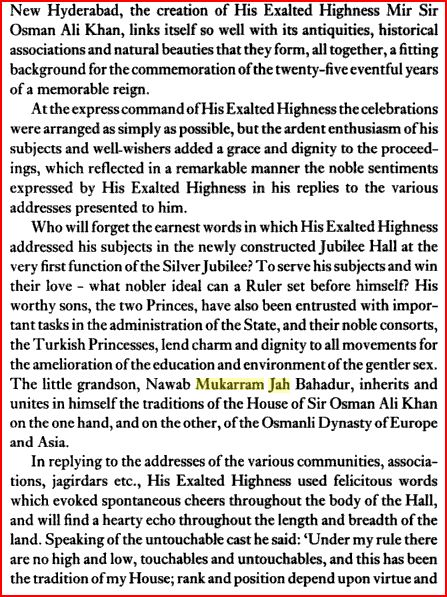
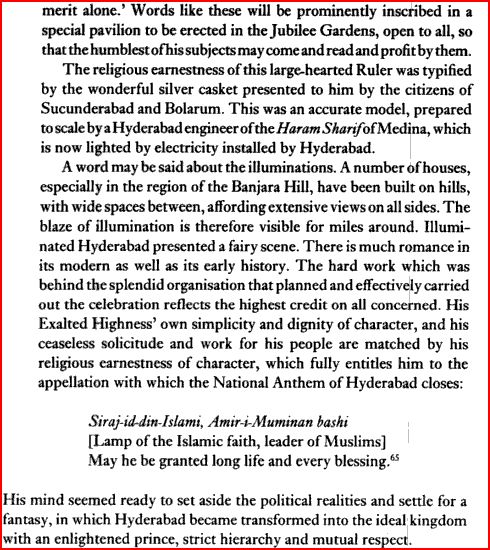
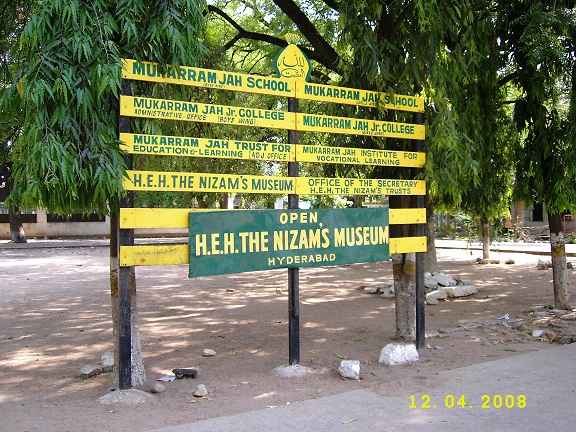


Osman Ali Khan, Asaf Jah VII..
| Mir asad Ali Khan Chin Chilich Khan Nizam-Ul-Mulk Asaf Jah VII | |
|---|---|
| The Nizam of Hyderabad MP GCSI GBE | |
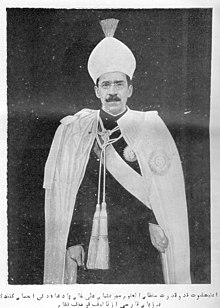 | |
| Reign | Nizam: 1911–1948 Titular Nizam: 1948–1967 |
| Coronation | 18 September 1911 |
| Urdu | Urdu: میر عثمان علی خان |
| Born | 6 April 1886 |
| Birthplace | Purani Haveli, Hyderabad,Hyderabad State, British India (now in Andhra Pradesh, India) |
| Died | 24 February 1967 (age 80) |
| Place of death | King Kothi Palace, Hyderabad, Andhra Pradesh, India |
| Buried | Judi Mosque, King Kothi Palace,Hyderabad, Andhra Pradesh, India |
| Predecessor | Mahbub Ali Khan, Asaf Jah VI |
| Successor | Monarchy abolished (Pretender:Mukarram Jah) |
| Consort | Dulhan Pasha Begum, among many others |
| Issue | Azam, Moazzam, and at least 18 other sons and 19 daughters |
| Royal House | Asaf Jahi Dynasty |
| Father | Mahbub Ali Khan, Asaf Jah VI |
| Mother | Amat-uz-Zahrunnisa Begum |
| Religious beliefs | Islam |
His Exalted Highness Sir Mir Osman Ali Khan Siddiqi GCSI, GBE Asaf Jah VII (Urdu: آصف جاہ), born Mir Osman Ali Khan Siddiqi Bahadur(Urdu: عثمان علی خان بہادر; 6 April 1886 – 24 February 1967), was the last Nizam (or ruler) of the Princely State of Hyderabad and of Berar. He ruled Hyderabad between 1911 and 1948, until it was merged into India. He was styled His Exalted Highness The Nizam of Hyderabad.[1]
During his days as Nizam, he was reputed to be the richest man in the world, having a fortune estimated at US$2 billion in the early 1940s ($33.3 billion in today dollars) or 2 per cent of the US economy then. At that time the treasury of the newly independent Union government of India reported annual revenue of US$1 billion only. He was featured on the cover of TIME magazine, portrayed as such. The Nizam is widely believed to have remained as the richest man in South Asia until his death in 1967, though his fortunes fell to US$1 billion by then and became a subject of multiple legal disputes between bitterly fighting rival descendants. His wealth include a vast private treasury. Its coffers were said to contain £100m in gold and silver bullion, and a further £400m of jewels. Among them was the fabulously rare Jacob Diamond, valued at some £100m (2008),and used by the Nizam as a paperweight. There were pearls, too – enough to pave Piccadilly – hundreds of race horses, thousands of uniforms, tonnes of royal regalia and Rolls-Royces by the dozen. Calculating his modern day worth by accounting for inflation, the Nizam was worth $236 billion, making him one of the wealthiest people to have ever lived.
He built the Hyderabad House in Delhi, now used for diplomatic meetings by the Government of India.
Reign
On 22 February 1937, Time magazine called the Nizam the richest man in the world. His vast inheritance was accumulated by way of mining royalties rather than land revenue. It should be noted that Hyderabad State in British India was the only supplier of diamonds for the global market in the 19th century.
Mir Osman Ali Khan Siddiqi Bahadur acceded as Nizam of Hyderabad upon the death of his father in 1911. The state of Hyderabad was the largest of the princely states in pre-independence India. With an area of 86,000 square miles (223,000 km²), it was roughly the size of present-day United Kingdom. Its ruler was the highest-ranking prince in India, was one of only five princes entitled to a 21-gun salute, held the unique title of "Nizam", and was created "His Exalted Highness" and "Faithful Ally of the British Crown" after World War One due to his financial contribution to the British Empire's war effort. (For example, No. 110 Squadron RAFs original complement of DH.9As were Osman Ali's gift. Each aircraft bore an inscription to that effect, and the unit became known as the Hyderabad Squadron.[7]
Mir Osman Ali Khan Siddqi Bahadur was the absolute ruler of this principality. In some accounts, he is held to have been a benevolent ruler who patronised education, science and development. His 37-year rule witnessed the introduction of electricity, railways, roads and airways were developed, the Nizamsagar lake in Hyderabad state was excavated and some irrigation projects on the Tungabhadra river were undertaken.
In 1941, Mir Osman Ali Khan Siddqi Bahadur started his own bank, the Hyderabad State Bank (now State Bank of Hyderabad) as the state's central bank, which managed the Osmania sikka, the currency of the Hyderabad state. It was the only state which had its own currency, the Hyderabadi rupee, which was different from the rest of India. Banknotes of Hyderabad gives a good reference of the banking of that period.
In 1947, the Nizam made a gift of diamond jewels, including a tiara and necklace, to Princess Elizabeth on the occasion of her marriage. The brooches and necklace from this gift are still worn by the Queen today.[8] –
Nearly all the major public buildings in Hyderabad city, such as the Osmania General Hospital, Andhra Pradesh High Court, Asafiya Library now known as State Central Library, Town Hall now known as Assembly Hall, Jubilee Hall, Hyderabad Museum, now known as State Museum, Nizamia Observatory and many other monuments were built during his reign. Up to 11% of the Nizam's budget was spent on education. Osmania University was founded while schools and colleges and even a "Department for Translation" were set up. Primary education was made compulsory and provided free for the poor. The Nizam (as well as his predecessors) have been criticised for largely ignoring the native languages in favour of Urdu.
Mir Osman Ali Khan Siddqi Bahadur donated to many institutions in India and abroad. Recipients included educational institutions such as the Jamia Nizamia, the Darul Uloom Deoband,Banaras Hindu University and Aligarh Muslim University.
Hyderabad was the only state in British India where the ruler was allowed to issue currency notes. A 100 rupee note was introduced in 1918.
He also paid for a Royal Australian Navy vessel, N-class destroyer, HMAS Nizam (G38) commissioned in 1940.
Mir Osman Ali Khan Siddqi Bahadur lived at King Kothi Palace—bought from a nobleman— during his entire life, after age 13. He never moved to Chowmahalla Palace not even after hisaccession to the throne.
Operation Polo & Abdication
After Indian independence in 1947, the country was partitioned on religious lines and Pakistan was established as a Muslim nation. The princely states were left free to make whatever arrangement they wished with either India or Pakistan. The Nizam ruled over more than 16 million people and 82,698 square miles (214,190 km2) of territory when the British withdrew from the sub-continent in 1947. The Nizam refused to join either India or Pakistan, preferring to form a separate kingdom within the British Commonwealth of nations.
The proposal for independent state was rejected unambiguously by the British government. The Nizam then resolved upon exploring the possibility of independence. Towards this end, he kept up open negotiations with the Government of India regarding the modalities of a future relationship while opening covert negotiations with Pakistan on a similar vein. He also concurrently encouraged the activities of the Razakars. The Nizam cited the Razakars as evidence that the people of the state were opposed to any agreement with India.[citation needed]
As a result, the new Indian government decided to invade and capture Hyderabad in 1948. Under the supervision of Major General Choudhry one division of the Indian army and a tank brigade invaded Hyderabad. The battle was quick and the Nizam's troops and the mercenary soldiers called Razakars gave up easily. However it is estimated that 27,000 to 40,000 civilians were massacred during and following Operation Polo.[9]
Marriages and children[edit]
On 14 April 1906, Mir Osman Ali Khan Siddiqi Bahadur married Azmathunnisa Begum (Dulhan Pasha Begum) (1889–1955),[10] daughter of Nawab Jahangir Jung, at Eden Bagh now known as Eden Garden at king kothi, hyderabad at the age 21. She was the first of his seven wives and 42 concubines, and the mother of two eldest of his sons Azam Jah and Moazzam Jah. His second wife was Iqbal Begum daughter of Nawab Nazir Jung Bahadur (Mirza Nazir Beg)
The first brother-in-law of Mir Osman Ali Khan Siddqi Bahadur was Nawab Khudrath Nawaz Jung son of Nawab Jahangir Jung,Sahebzada Mir Jahangir Ali Khan and younger brother of Dulhan Pasha Begum first wife of Osman Ali Khan
Their eldest son, Azam Jah, was married to Durru Shehvar, daughter of Abdul Mejid II (the last Ottoman Caliph and cousin and heir of the last Sultan of the Ottoman Empire). Moazzam Jahmarried Princess Niloufer, a princess of the Ottoman empire.
It has been suggested that through these dynastic marriages, Osman Ali hoped to acquire the Caliphate for his descendants.
Mir Osman Ali Khan Siddqi Bahadur had least 149 children, including:
- Sahebzadi Yawar un-nisa Begum Sahiba (d. in childhood)
- Sahebzadi Hidayat un-nisa Begum Sahiba (1901–1925)
- Nizam uddin bahadur (1903–1987)
- Azam Jah Sahebzada Mir Himayath ali khan (1907–1970)
- Muazzam Jah Sahebzada Mir Shujayath Ali Khan (1907–1987)
- Sahebzada Mir Osman 'Ali Khan Bahadur (29 February-30 June 1908)
- Sahebzada Mir Kazim Ali Khan, Kazim Jah (1912–1952)
- Sahebzada Mir Abid Ali Khan, Abid Jah (1913–1983)
- Sahebzada Mir Hashmat Ali Khan, Hashmat Jah (1913–1988)
- Sahebzada Mir Hashim Ali Khan, Hashim Jah (1913–1991)
- Sahebzada Mir Taqi Ali KHan, Taqi Jah (1913–1985)
- Sahebzadi Hurmat un-nisa Begum Sahiba (1913–)
- Sahebzadi Karim Osman Murat un-nisa Begum (1913–)
- Sahebzadi Jamal un-nisa Begum Sahiba (1913–1973)
- Sahebzadi Behbood un-nisa Begum Sahiba (1914–)
- Sahebzadi Mahmood un-nisa Begum Sahiba (1914–1984)
- Sahebzada Mir Basharat Ali Kha, Basharat Jah (1915–1991)
- Sahebzadi Mehar un-nisa Begum Sahiba (1915–1964)
- Sahebzadi Ghaffoor un-nisa Begum Sahiba (1915–)
- Sahebzadi Aleem un-nisa Begum Sahiba (1915–)
- Sahebzadi Nazeer un-nisa Begum Sahiba (1916–1975)
- Sahebzada Mir Rajjab Ali Khan, Rajjab Jah (1917–1968)
- Sahebzada Mir Saadat Ali Khan, Sa'adat Jah (1917–1988)
- Sahebzadi Faruq un-nisa Begum Sahiba (1918–)
- Sahebzadi Kabir un-nisa Begum Sahiba (1920–)
- Sahebzadi Masud un-nisa Begum Sahiba (1923–1980)
- Sahebzadi Asmat un-nisa Begum Sahiba (1924–1979)
- Sahebzaid Bashir un-nisa Begum Sahiba (1927–)
- Sahebzadi Ramzani Begum Sahiba (1931–1974)
- Sahebzada Mir Jawad Ali Khan, Jawad Jah (d. 1936)
- stillborn son (1938)
- Sahebzadi Mashadi Begum Sahiba (1939–)
- Sahebzada Mir Zulfiqar Ali Khan, Zulfiqar Jah (1943–)
- Sahebzada Mir Imdad Ali Khan, Imdad Jah (1944 – March 4, 2013)
- Sahebzada Mir Nawazish Ali Khan, Nawazish Jah (1944–2010)
- Sahebzada Mir Fazal Ali Khan, Fazal Jah (1946–)
- Sahebzada Mir Bhojat Ali Khan, Bhojat Jah (1947–1982)
- Sahebzada Mir Shabbir Ali Khan, Shabbir Jah (1948–1985)
- Sahebzadi Sayida Begum Sahiba Malta (1949–)
- Sahebzada Wahid Ali Khan (1951–1999)
- Sahebzada Mohammed Ali Khan
- Sahebzada Sardar ali Khan
- Sahebzada Wajid ali Khan
Later life
Mir Osman Ali Khan Bahadur died on Friday, 24 February 1967. It was the end of a princely era. His funeral procession was one of the largest in Indian history.[citation needed] He had willed that he be buried in the Judi Mosque that faced King Kothi Palace.
Official name and titles
His Exalted Highness Rustam-i-Dauran, Arustu-i-Zaman, Wal Mamalik, Asaf Jah VII, Muzaffar-ul-Mulk-Wal-Mamalik, Nizam ul-Mulk, Nizam ud-Daula Nawab Mir SirMir Osman Ali Khan Siddqi Bahadur, Sipah Saula, Fateh Jung, Nizam of Hyderabad and of Berar, Knight Grand Commander of The Most Exalted Order of the Star of India, Knight Grand Cross of the Most Excellent Order of the British Empire, Royal Victorian Chain, Honorable General in the Army, Faithful Ally of the British Government.
His Exalted Highness was the honorary Colonel of the 20 Deccan Horse. In 1918, Nawab Mir Osman Ali Khan Siddqi Bahadur was elevated by King George V from His Highness to His Exalted Highness. In a letter dated 24 January 1918, the title Faithful Ally of the British Government was conferred on him.[11]
The titles during his life were:
- 1886–1911: Nawab Bahadur Mir Osman Ali Khan Siddqi
- 1911–1912: His Highness Rustam-i-Dauran, Arustu-i-Zaman, Wal Mamaluk, Asaf Jah VII, Muzaffar ul-Mamaluk, Nizam ul-Mulk, Nizam ud-Daula, Nawab Mir Sir Osman 'Ali Khan Siddqi Bahadur, Sipah Salar, Fath Jang, Nizam of Hyderabad, GCSI
- 1912–1917: Colonel His Highness Rustam-i-Dauran, Arustu-i-Zaman, Wal Mamaluk, Asaf Jah VII, Muzaffar ul-Mamaluk, Nizam ul-Mulk, Nizam ud-Daula, Nawab Mir Sir Osman 'Ali Khan Siddqi Bahadur, Sipah Salar, Fath Jang, Nizam of Hyderabad, GCSI
- 1917–1918: Colonel His Highness Rustam-i-Dauran, Arustu-i-Zaman, Wal Mamaluk, Asaf Jah VII, Muzaffar ul-Mamaluk, Nizam ul-Mulk, Nizam ud-Daula, Nawab Mir Sir Osman 'Ali Khan Siddqi Bahadur, Sipah Salar, Fath Jang, Nizam of Hyderabad, GCSI, GBE
- 1918–1936: Lieutenant-General His Exalted Highness Rustam-i-Dauran, Arustu-i-Zaman, Wal Mamaluk, Asaf Jah VII, Muzaffar ul-Mamaluk, Nizam ul-Mulk, Nizam ud-Daula, Nawab Mir Sir Osman 'Ali Khan Siddqi Bahadur, Sipah Salar, Fath Jang, Faithful Ally of the British Government, Nizam of Hyderabad, GCSI, GBE
- 1936–1941: Lieutenant-General His Exalted Highness Rustam-i-Dauran, Arustu-i-Zaman, Wal Mamaluk, Asaf Jah VII, Muzaffar ul-Mamaluk, Nizam ul-Mulk, Nizam ud-Daula, Nawab Mir Sir Osman 'Ali Khan Siddqi Bahadur, Sipah Salar, Fath Jang, Faithful Ally of the British Government, Nizam of Hyderabad and Berar, GCSI, GBE
- 1941–1967: General His Exalted Highness Rustam-i-Dauran, Arustu-i-Zaman, Wal Mamaluk, Asaf Jah VII, Muzaffar ul-Mamaluk, Nizam ul-Mulk, Nizam ud-Daula, Nawab Mir Sir Osman 'Ali Khan Siddqi Bahadur, Sipah Salar, Fath Jang, Faithful Ally of the British Government, Nizam of Hyderabad and Berar, GCSI, GBE
Honours
Official title:
His Exalted Highness Rustam-I-Dauran, Arastu-I-Zaman, Lieutenant General, Muzaffar-ul-Mulk WalMamalik, Nawab Mir Osman Ali Khan Bahadur, Fateh Jung, Nizam-ud-Daula, Nizam-ul-Mulk, Asaf Jah, G.C.S.L, G.B.E., Nizam of Hyderabad and Berar.[12]
British Empire
- Delhi Durbar Gold Medal, 1911
- GCSI: Knight Grand Commander of the Order of the Star of India, 1911
- GCStJ: Bailiff Grand Cross of the Order of St John, 1911
- GBE: Knight Grand Cross of the Order of the British Empire, 1917
- King George V Silver Jubilee Medal, 1935
- King George VI Coronation Medal, 1937
- Royal Victorian Chain, 1946
Special thanks to wiki pedia....
2.His Exalted Highness Prince Mukarram Jah Bahadur, 8th Nizam
of Hyderabad
His Exalted Highness Prince Mukarram Jah Bahadur, 8th Nizam of Hyderabad
Interviews and feature stories from American, Australian, British and Indian newspapers and magazines
Chowmahalla Palace exhibit (above) - thrown open to the public in the past few years, Chowmahalla Palace is now one of Hyderabad's foremost cultural and historic attractions
H.E.H Nizam VII with his grandson Sahebzada Mukarram Jah, circa. 1930's & Prince Mukarram Jah on horseback (below)
Born 6 October 1933 in Nice, in France, Prince Mukarram Jah was the heir to possibly the world's biggest private fortune. The scion of two great dynasties, his maternal grandfather was the last Ottoman Caliph ('Abdu'l-Mijid II) and his paternal grandfather the 7th Nizam of Hyderabad (Osman Ali Khan), widely considered the richest man in the world during his lifetime, amassing a fortune worth a staggering US$210 billion in today's money (http://en.wikipedia.org/wiki/Wealthy_historical_figures_2008 ). For centuries, the Nizams of Hyderabad had ruled over an area the size of France in southern India, initially governing on behalf of the Mughal Empire but later becoming independent rulers. Eventually, they became closely allied to the British, and were accorded the status of premier princely state in all of India.
Nizam VIII after his lavish coronation at Chowmahalla Palace in Hyderabad in 1967 (above). Chowmahalla Palace today, after loving and faithful restorations (below).
After Indian Independence in 1947, the Nizam refused to join the Indian Union. But his forces were no match for the Indian Army which invaded Hyderabad state in 1948, forcibly annexing the territory in an operation dubbed "Operation Polo". The kingdom of the Nizams was no more, but the 7th Nizam was nevertheless allowed to keep most of his assets, including his palaces, servants, and private fortune.
Prince Mukarram Jah was crowned the 8th Nizam of Hyderabad in 1967 following the death of Osman Ali Khan. In the 1970's when the Indian Government abolished princely titles, privileges and privy purses, the 8th Nizam took the momentous decision to settle in Australia, to carve out the life of a "gentleman farmer".
The Statesman (Indian newspaper) - September 1970 cover stories on the abolition of princely privileges - "Lok Sabha Votes Privy Purses Bill - Concept of Rulership Abolished" & "Princely Era Fades into History - President Withdraws Recognition - Immediate Abolition of Purses, Privileges"
The 8th Nizam of Hyderabad's love affair with Australia began in 1972 when he visited the city of Perth in Western Australia for the very first time, and was attracted by the peace and quiet, the people, and the open spaces. A short while later, he purchased a half-million-acre sheep farm near the town of Kalbarri known as Murchison House Station (600km north of Perth). He met and married an Australian woman (Helen Simmons), who bore him two sons. In 1978 he acquired a luxury mansion in West Perth (known as Havelock House). Helen Simmons sadly passed away in 1989. Later, his sheep farm and Havelock House were sold off. The 8th Nizam or "Prince Jah" now lives unpretentiously in Turkey, preferring the "simple life" of the common man. His periodic visits to Hyderabad are eagerly anticipated by his innumerable loyal subjects. He and his first wife Princess Esra are universally admired for spearheading the comprehensive and costly restorations to the historic palaces of Chowmahalla and Falaknuma, preserving for future generations these glorious heirlooms of the Nizams of Hyderabad. In recognition of these efforts,Chowmahalla Palace won the prestigious UNESCO Heritage Conservation Award in September 2010, edging out tough competition.
Whilst living in Australia, the 8th Nizam of Hyderabad granted interviews to a number of newspapers, some of which you may read below.
The New York Times newspaper (August 17, 1967) - "Ex-Employees of Nizam in India Protest Economy-Drive Ouster"
The West Australian newspaper (Friday, February 24, 1984) - "Meet Mr Jah: A princely fortune in his sights" & "The Two Lives of the Nizam of Hyderabad"
Garden Living Western Australia (January 1987 edition) - "Princess of West Perth" - article about Nizam of Hyderabad's West Perth mansion (Havelock House) and his wife Princess Ayesha Jah (a.k.a. Helen Simmons)
The West Australian newspaper (Saturday, February 3, 1990) - "Nizam feels the squeeze over 'petty' claims" & "Even princes feel the pinch"
The West Australian newspaper (Tuesday, October 30, 1990) - "Prince strikes at his critics"
Sunday Times (Perth) newspaper (April 4, 1993) - "AIDS death stunned prince" ; "A 'good bloke' turns his back on fabled Raj" ; "Prince prefers the simple life"
Sunday Times (Perth) newspaper (April 16, 1995) - "Baby not mine: Prince" & "Prince prefers flies and a lonely station"
Prince Mukarram Jah liked to avoid controversy but the Australian tabloids had a habit of sensationalising events!
Sunday Times (Perth) newspaper - "For sale - The Treasures of the Moguls"
Excerpts from Gregsons Auctioneers catalogue for auction on 1st December 1995 - "The Nizam of Hyderabad - The Chattels from the Havelock Street, West Perth, Ex-Residence" -
HISTORICAL FLASHBACK - Death of the 6th Nizam of Hyderabad in 1911
The New York Times newspaper (August 30, 1911) - "Nizam of Hyderabad Dead - Premier Prince of Indian Empire Had Annual Income of $10,000,000"
Letter of condolence from the Viceroy of India, Baron Hardinge to Mir Osman Ali Khan, on the demise of his father, and offering congratulations on his accession to the throne
Nizam of Hyderabad Parure is a legendary Diamond Necklace and Tiara, a coronation gift from the Nizam of Hyderabad to H.M. Queen Elizabeth II of England. This wonderful tiara does not exist anymore. Made by Cartier and later broken up to be used in a new setting, in the Burmese Ruby Rose Tiara, crafted by Court jeweller Garrard.
A first-hand account of the 7th Nizam's Silver Jubilee celebrations of February 1937 by Yusuf Ali
(from "Searching for Solace - A Biography of Abdullah Yusuf Ali, Interpreter of the Qur'an" by M.A. Sherif, pp. 107-108)
"Under my rule there are no high and low, touchables and untouchables, and this has been the tradition of my House; rank and position depend upon virtue and merit alone.' - 7th Nizam's speech at Jubilee Hall in Hyderabad
Courtesy from great Hyderabad Nawabs.....
8th Nizam of Hyderabad Guestbook
8th Nizam of Hyderabad Guestbook
support by great web owners http://cvxmelody.50webs.com/


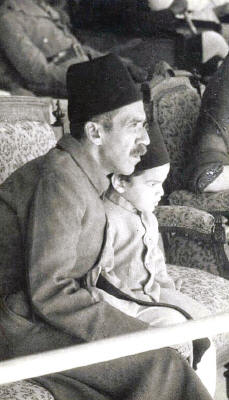



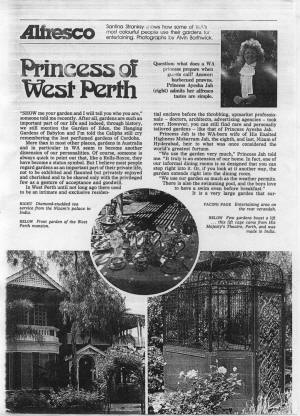
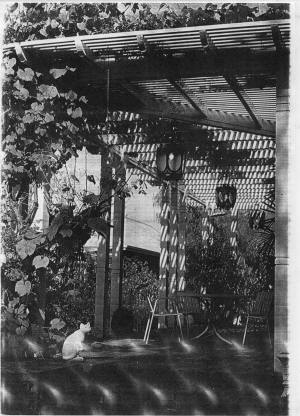
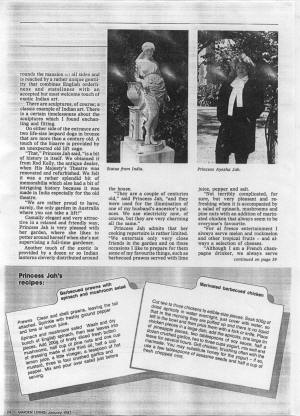
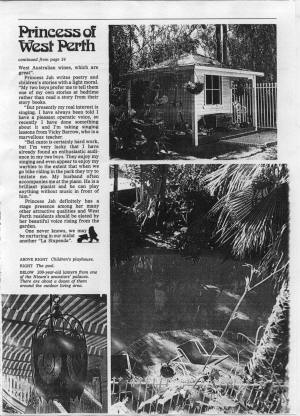
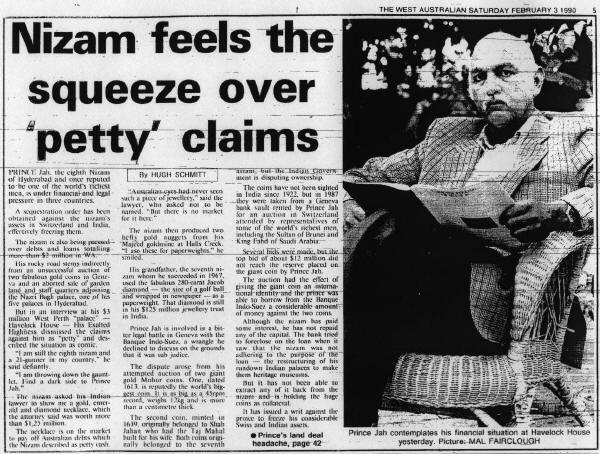
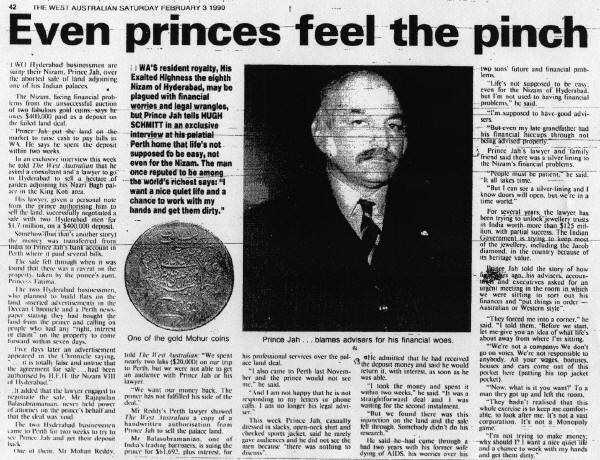
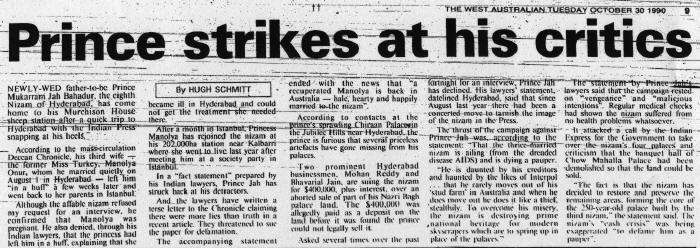
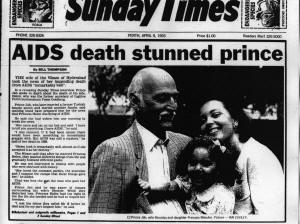
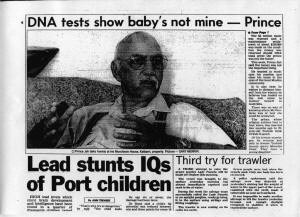
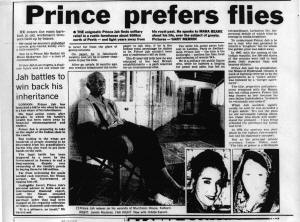
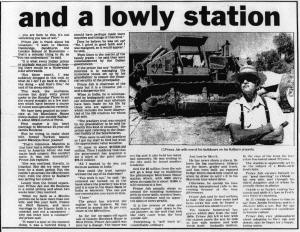

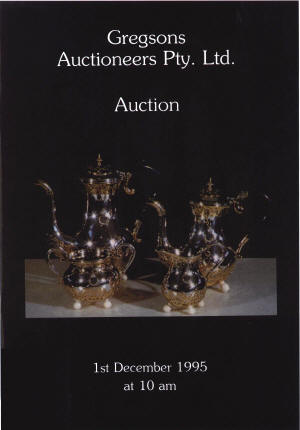

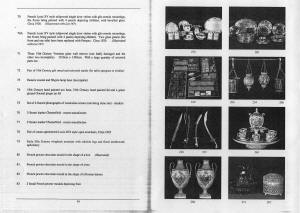
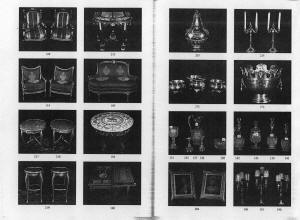
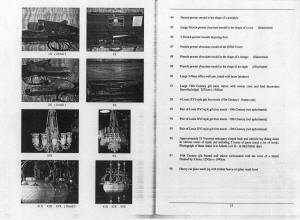
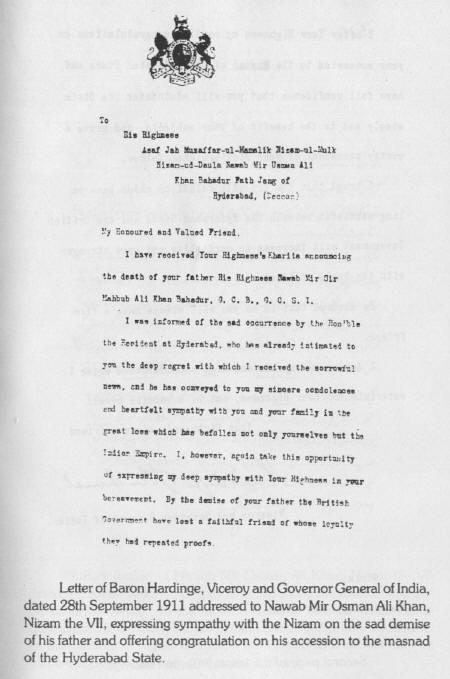
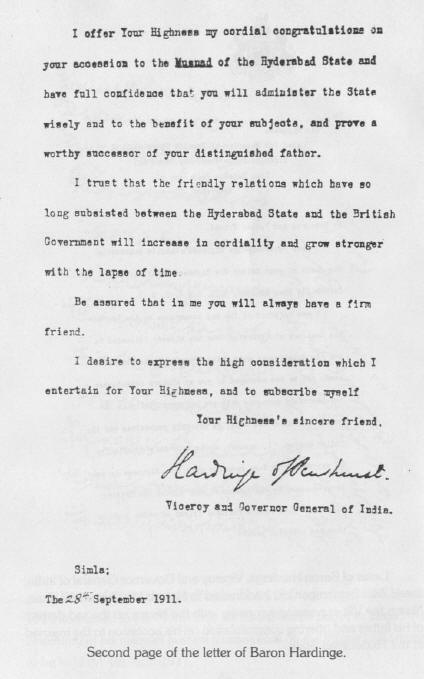
No comments:
Post a Comment